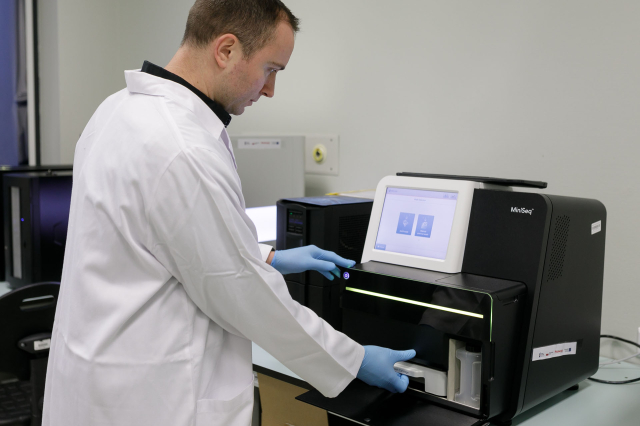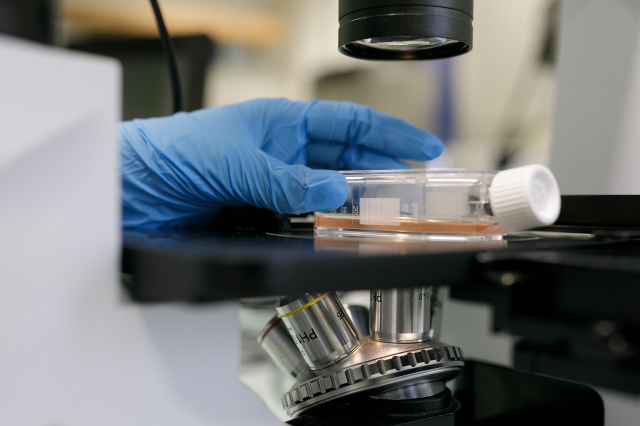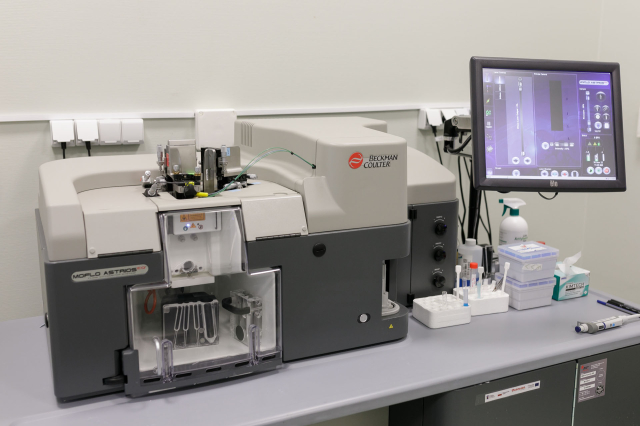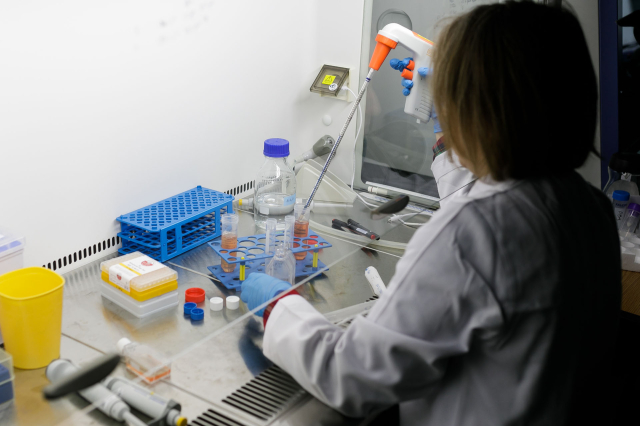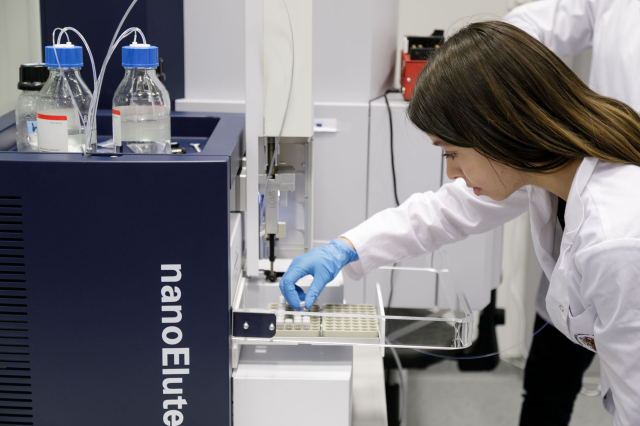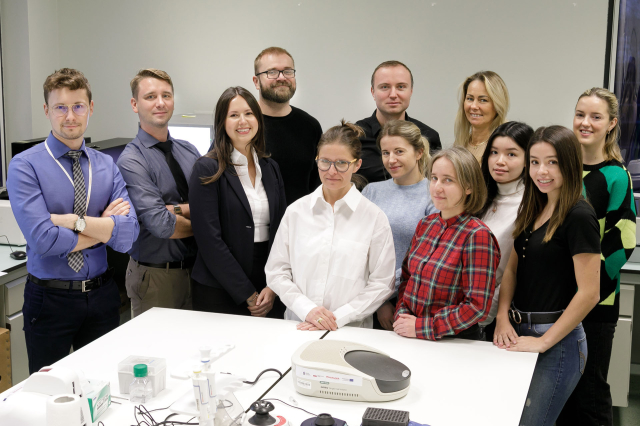We develop regenerative medicine at the Medical University of Warsaw (MUW)
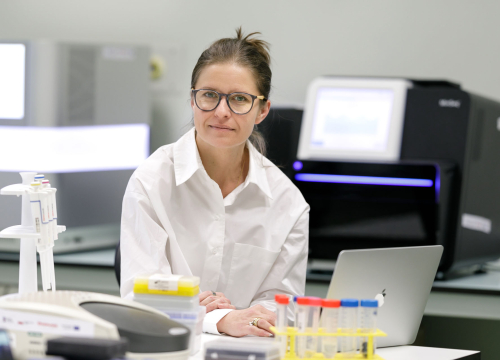
Why is there so much interest in regenerative medicine today?
Prof. Magdalena Kucia: Regenerative medicine is characterized by the ability to restore the lost function of tissues or organs. Its primary objective is to develop procedures and/or cellular products to replace damaged structures of the body. A number of ongoing studies focus on the identification, characterization and isolation of stem cells from the adult organism in the hope that these cells may prove useful in the treatment and renewal of mature damaged tissues through exogenous cell therapy and/or through activation of endogenous stem cells.
The cell therapy sector is currently involved in more than 2,200 clinical trials worldwide. Every year over 60,000 haematopoietic stem cell transplants are performed worldwide in the treatment of oncological and hematological diseases. The potential savings from regenerative medicine therapy – in the United States alone – in reducing the direct costs associated with chronic diseases have been estimated at about $250 billion per year.
What does the Laboratory team do?
MK: We conduct research aimed at optimizing the multiplication, and use in clinical medicine, of both early stem cells isolated from adult tissues and from cells reproducing damaged tissues. At the same time, we are developing protocols to exploit the paracrine effects of cells (when signaling molecules released from cells act on surrounding cells without participation of the bloodstream), resulting from their expansion in ex vivo cultures. We have developed protocols for differentiating primitive pluripotent VSEL cells into hematopoietic cells, endothelial cells and pneumocytes. The phase of basic and application research with available animal models has been completed in the case of differentiation of VSELs into endothelial cells and pneumocytes. The results have been published in Leukemia, Cells and Stem Cell Reviews and Reports journals.
Our team is the author of the discovery of early-developmental cells in adult tissues. They have been described as very small embryonic like stem cells (VSELs). Their presence has been confirmed by independent research groups around the world. We were also the first in the world to describe the beneficial effects of paracrine effects of cells used in regenerative medicine, by releasing various trophic compounds and extracellular microvesciles (ExMVs) from them.
Recently we have developed an effective method for ex vivo multiplication in in vitro cultures of VSEL cells and their differentiation into daughter cells of different tissues. It should be emphasized that we do not use viral vectors or co-cultures with other cells in this method. This innovative strategy is covered by a patent application that we have filed. The results of the work were presented during the V Baltic Stem Cell Meeting International Congress hosted by us (October 2022, Warsaw) and published in the prestigious Circulation Research journal.
Our scientists from the Laboratory, as the first group in the world, have also explained how the coronavirus can, on the one hand can, directly infect hematopoietic stem cells responsible for hematopoietic processes and, on the other hand, lead to a cytokine storm. The results of our research were presented at the international meeting of the American Society of Hematology. They have been appreciated by the global research community.
And what are your scientific plans for the coming years?
MK: We have a lot of plans. We want to develop and prepare stem and ExMV cells for clinical purposes for MUW’s clinics and hospitals and for other cooperating centers. For this purpose we will follow the applicable GMP standards with the best possible observance of hygiene in the workplace, ensuring product quality and homogeneity. These cells can be used in almost all areas of clinical medicine.
In parallel, we will develop, in accordance with the GMP standards, protocols for obtaining ExMVs for clinical purposes, including ExMVs from cultures of VSELs cells undergoing ex vivo expansion.
A few years ago, we also proposed new solutions to develop optimal protocols for obtaining ExMVs as new treatment strategies. In the first stage, the ExMVs will be used to treat skin burns and non-healing lower leg wounds.
We also plan, in cooperation with nanotechnology, to develop new protocols for obtaining modified ExMVs, which will ultimately lead to optimal delivery of drugs in the form of nanoparticles to cells. In this case, ExMVs will act as physiological liposomes.
ExMVs can also be used in the diagnosis of a number of diseases including cancer. Molecular analysis of these structures circulating in body fluids provides information about their origin, e.g. from damaged tissues.
Our ambition is to create at MUW an international reference model of a cell therapy center for the needs of regenerative medicine, based on our own intellectual property and submitted international patents.
There is more and more talk about the use of regenerative medicine to inhibit the aging process. Is this topic also in your research interests?
MK: Absolutely. Taking into account demographic data on the aging of the European population, we have proposed adding a new field to regenerative medicine sciences: stem cell pharmacology. We want to develop therapeutic strategies to increase the vitality of stem cells in mature tissues (including VSEL cells).
Newly developed research protocols will aim to develop conditions and therapeutic procedures that will maintain the stem cell population in the best functional state. This directly determines their potential for physiological regeneration or rejuvenation of tissues used up over time, and thus indirectly determines the life expectancy of the individual. In this research, we plan to cooperate with the pharmaceutical industry and with institutes dealing with dietetics, sports medicine and rehabilitation.
Taking into account the extremely high social potential of your projects, have you managed to establish cooperation agreements with industrial partners?
MK: Yes, absolutely. Our research is of interest to medical and biotechnology companies. So far, as a consortium within the CePT II project, we have signed a framework agreement for the commercialization of our research results. The agreement provides for both optimization of methods of using in regenerative medicine early-developmental stem cells present in tissues isolated from adults, in the treatment of a number of diseases, and for optimizing the use of extracellular microvesicles (ExMVs) in clinical medicine, diagnostics and the cosmetics industry. The agreement also concerns the development of therapeutic procedures to slow down the aging process. It further envisages the creation of a new therapeutic platform, the so-called pharmacology of stem cells, and the use of nanotechnology in regenerative medicine.
CePT II project – supporting the university’s research potential
In 2018 MUW signed a contract for the implementation of the project known as the “Center for Preclinical Research and Technology – CePT II”. It has enabled intensification of research and implementation works in close cooperation with business partners. It will last until 2023.
CePT II is implemented by a scientific consortium formed by the Medical University of Warsaw (Applicant and Consortium Leader), the University of Warsaw (consortium member) and the Institute of High Pressure Physics of the Polish Academy of Sciences (consortium member).
The research conducted within the project covered three thematic areas: regenerative medicine (Laboratory of Regenerative Medicine, Medical University of Warsaw), nanomedicine (the Institute of High Pressure Physics of the Polish Academy of Sciences) and verification of innovative technologies through the use of mass spectrometry, isotope and 3D prototyping techniques (University of Warsaw).
As part of the project, the consortium purchased specialized apparatus and equipment for research and development purposes. Their value is about PLN 45 million. The workrooms of the Laboratory of Regenerative Medicine has received over 20 state-of-the-art instruments.
- The proteomics laboratory has been upgraded by the addition of a mass spectrometry system. It consists of two mass spectrometers coupled with a nano-UHPLC (nanoElute) chromatograph. The mass spectrometers included in the system are SolariX 2xR (cyclotron ion resonance analyzer with Fourier transformation of results, FT-ICR), equipped with two ionization sources (electrospray ionization, ESI) and matrix-assisted laser desorption/ionization (MALDI), and Compact (quadrupole with time-of-flight analyzer) with ESI ionization source).
- The flow cytometry laboratory received: BD FACSVerse cytometer, BC MoFlo Astrios EQ high-speed cell sorter (equipped with 355, 488 and 640 nm lasers), two FSC detectors (FSC1 and FSC2) and autoMACS Pro Separator (a stationary device for rapid cell sorting using magnetic beads).
- The genomic sequencing laboratory is now additionally equipped with the NGS NextSeq 2100 sequencer, the latest personal sequencer with high throughput. The system allows sequencing up to 120 GB of data while ensuring speed, ease of use and cost availability comparable to previously available personal NGS systems; NGS MiniSeq sequencer; Intelliseq / Thomas-Krenn analytics server; TapeStation 4150; fluorometer; digital PCR system; real-time PCR (384-well block) QuantStudio 5; real-time PCR (96-well block); Simpli Amp Thermal Cycler; Termocycler Proflex 96; magnetic separator Magtivio MM-Separator M96.
Also the imaging laboratory, the membrane microvescile laboratory and the cell culture laboratory have been additionally equipped. Thanks to the purchased equipment, the Laboratory has not only increased its potential of providing services and conducting research in the field of advanced technologies for enterprises but also managed to strengthen cooperation between its research units and the industry.
Support for application research conducted in cooperation with enterprises.
The CePT II project is implemented under the “Regional Operational Program of the Mazovian Province for the years 2014-2020” (RPO WM 2014-2020), under “Measure 1.1: Research and development activities of scientific units – Type of projects – Support for research and development infrastructure of scientific units”. The total value of the project is approx. PLN 45 million.
